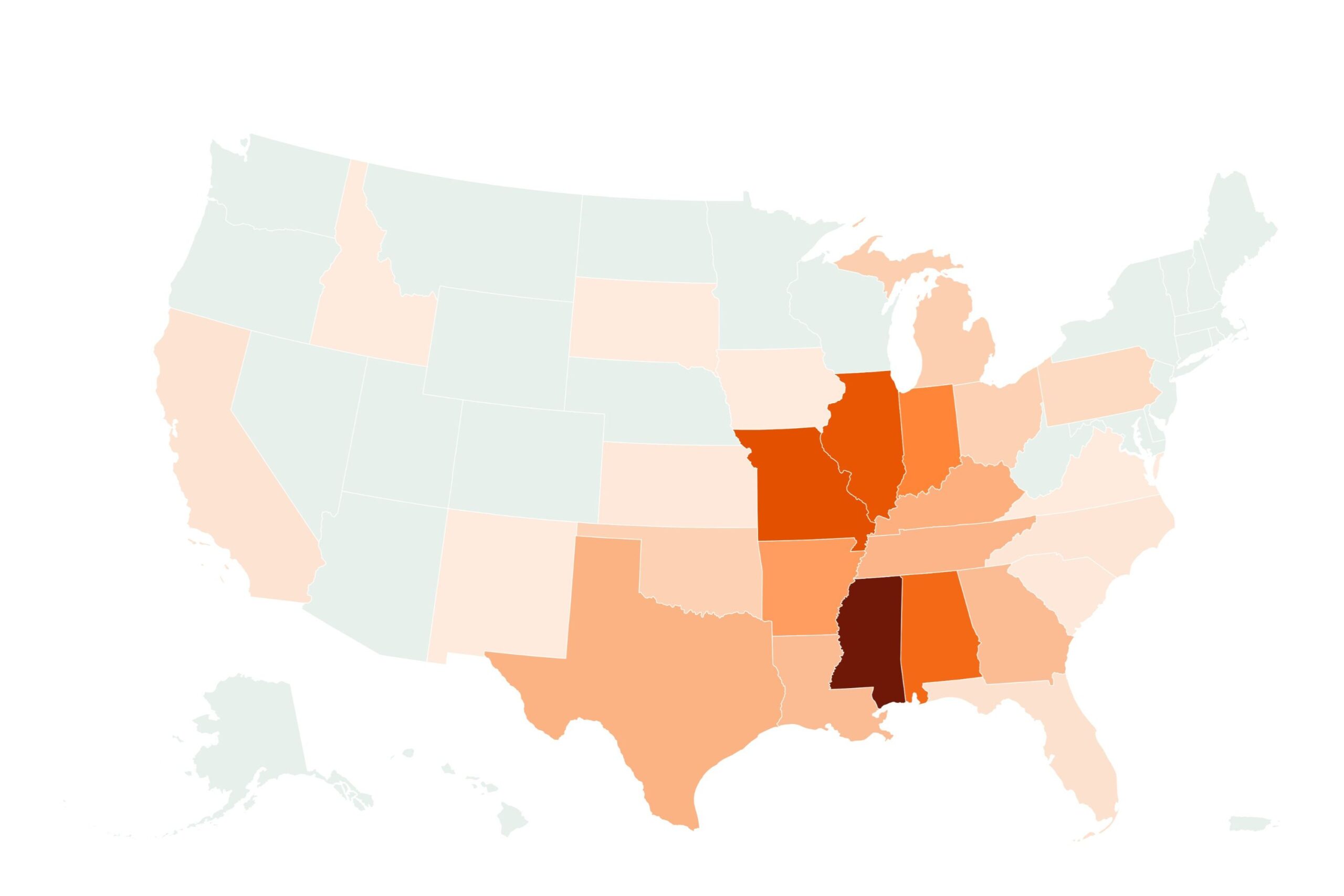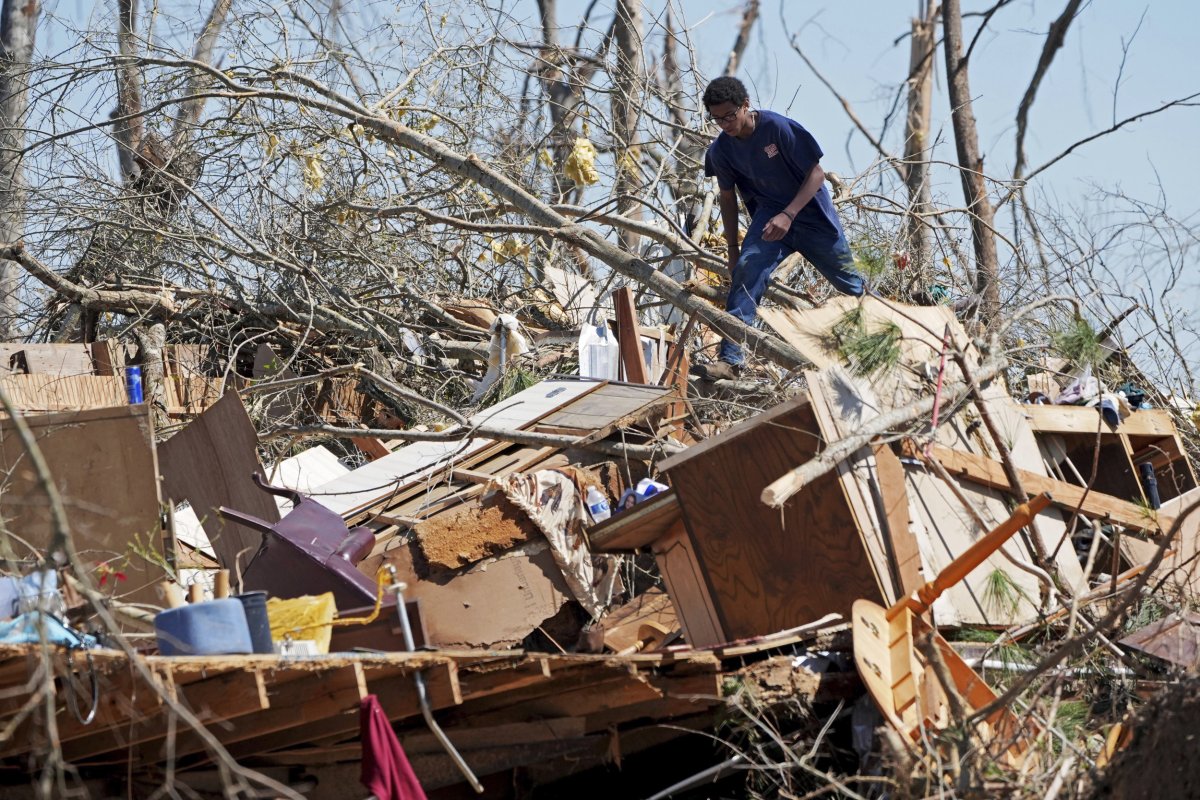
Reported tornado activity across the U.S. is almost twice the historical average for this time of year, with more than 470 reports logged so far in 2025, according to meteorologists.
Why It Matters
The uptick in tornadoes is part of a broader pattern of severe weather that has already caused hundreds of billions of dollars in damage nationwide.
AccuWeather estimates that storms, floods and other weather-related disasters have resulted in between $344 billion and $382 billion worth of losses so far this year.

Rogelio V. Solis/AP
What To Know
On Wednesday, AccuWeather meteorologists said in an advisory that recent tornado outbreaks in the Midwest and Southeast were behind the dramatic spike in activity, which has significantly surpassed the typical average of 260 tornadoes by early April.
The high numbers come as storm systems have tracked through areas outside of the traditional Tornado Alley, such as in Mississippi and Alabama.
According to AccuWeather data, Mississippi has seen the highest number of tornado reports so far on 92. This is followed by Missouri and Illinois with 57 and 55 respectively.
Three widespread outbreaks in March and April have been key drivers of this year’s tornado total.
From March 14 to 16, a multi-state outbreak produced 115 confirmed tornadoes, including three EF4s and a dozen EF3s, according to AccuWeather. Between March 30 and 31, 71 tornadoes were confirmed, and a further 56 were confirmed between April 2 and 3, with additional surveys pending.
Tornado activity was also recorded outside of these major outbreaks. At least one tornado was reported every day from March 26 to April 7.
According to AccuWeather’s forecast, the U.S. could see between 1,300 and 1,450 tornadoes this year—slightly above the long-term annual average of 1,225.
What People Are Saying
Dan DePodwin, AccuWeather senior director of forecasting operations,said in the advisory on Wednesday: “This has been an extremely dangerous and destructive stretch of spring severe weather. Tornadoes have damaged or destroyed hundreds of homes and businesses across the central and southeastern U.S. Catastrophic flash flooding has left communities underwater and caused major disruptions to business, commerce and shipping operations.”
He added: “The frequency and severity of extreme weather in America this year has been alarming. There is no doubt that weather disasters are taking a major toll on people’s overall lives, their finances, physical health and mental health.”
Ryan Hall, aweather analyst, wrote on X, formerly Twitter, on Sunday: “March 30th to April 5th was one of the most intense stretches of severe weather in recent memory. We tracked over 50 tornadoes, some intense to violent, hitting hard in communities like Lake City, Selmer, La Grange, and Potosi. April 2nd was especially dangerous, with the much warranted rare Level 5 High Risk from the Storm Prediction Center.”
What Happens Next
Paul Pastelok, AccuWeather’s lead long-range expert, said additional severe weather outbreaks are not expected over the next week.
However, he said that another outbreak may be possible around Easter weekend, on April 19 or 20.





